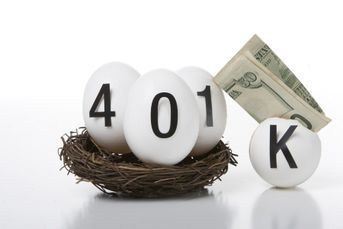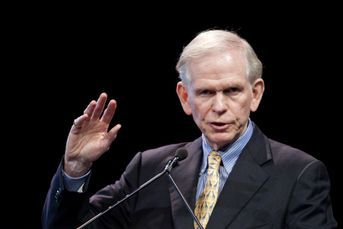Bond rally sparks little joy as bears see ‘painful’ capitulation
Investors have been betting on bond prices to fall and rates to rise but the opposite is happening. Here's why.
From the Americas to Asia, and from Europe to the Middle East, the $100 trillion bond market this year is turning into one for the record books.
Returns on fixed-income securities of all types, from government to corporate and asset-backed debt, averaged 3.97% through the first five months of 2014 as of May 29, matching the record set in 2003 based on the Bank of America Merrill Lynch Global Broad Market Index. As bond prices rallied, yields as measured by the gauge fell to the lowest in a year.
Rather than sparking celebration, the rally is causing much angst. That’s because many investors were betting on the opposite to happen as the global economy strengthened, leading central banks to start employing tighter monetary policies. Instead, growth slowed, signs of disinflation emerged in Europe and tensions between Ukraine and Russia sparked demand for the safety of fixed-income assets.
(Don’t miss: Bond market message to Fed: Your 4% rate outlook is too high)
“It’s been a very painful week for a lot of people,” Elaine Stokes, a money manager who helps oversee the about $22 billion, Boston-based Loomis Sayles Bond Fund, said. “The big move we’ve seen recently, in the last couple of weeks, in the lowering of the yield base, is really a bit of a capitulation.”
BOND MEASURE
The Bloomberg Global Developed Sovereign Bond Index (BGSV) shows yields declined to an average 1.28%, the lowest since May 2013, as those on Austrian, Belgian, French, Irish and Spanish debt decreased to records. Treasury 10-year note yields — the global benchmark — fell this month by the most since January and Japanese yields slid to the least in 12 months.
Investors have been buffeted by a U.S. economy that shrank more than forecast in the first quarter and signals from the European Central Bank that it’s prepared to ease as German unemployment unexpectedly rose last month. Bank of Japan Board Member Sayuri Shirai said in a May 29 speech that unprecedented easing may continue beyond next year and downplayed optimism that inflation would reach its target in fiscal 2015.
The Paris-based Organization for Economic Cooperation and Development cut its forecast for global growth, saying in its semi-annual report on May 6 that the world economy will expand 3.4% this year instead of the 3.6% predicted in November.
All of that is good news for bonds, forcing investors to unwind trades betting on losses. Futures traders have been positioned for a rise in 10-year U.S. yields since August. Hedge funds and other large speculators reduced their net-short position in U.S. 10-year note futures by the most since February to 19,078 contracts as of May 27, according to U.S. Commodity Futures Trading Commission data.
“The fixed-income market is really strong,” Kim Youngsung, the head of overseas investment at South Korea’s Government Employees Pension Service in Seoul, which has the equivalent of $3.9 billion in assets, said. “I’m surprised at how far yields went down. Some investors were really shocked. They didn’t expect this kind of decline. There’s short covering.”
The rally has extended to credit markets. The Bank of America Merrill Lynch Global Corporate & High Yield Index returned 5.07% this year through May 29. Yields dropped to 3.22% from last year’s high of 3.97% in September.
Evidence of uneven economic growth that may constrain inflation has confounded predictions for a second year of bond losses after early signs that growth is gaining traction prompted the Federal Reserve to taper its $85 billion-a-month bond-buying program.
ECONOMIC SHORTAGE
U.S. gross domestic product contracted 1% in the three months through March, government figures showed this week, after an estimate last month signaled 0.1% expansion. At the same time, more Americans are retiring, which means a shrinking workforce, leading to less spending, slower inflation and greater demand for low-risk, income-producing investments.
“The Fed and ECB have been more dovish about deflation risk and the lower-growing momentum,” Will Tseng, a money manager in Taipei at Mirae Asset Global Investments Co., which has more than $58 billion in assets, said. “They think the economy is still moderate. Policy makers are trying to be more dovish. The ECB is going to do more” easing, he said.
Bloomberg surveys of more than 60 economists and strategists show they are trimming their forecasts for how high 10-year Treasury yields will rise in 2014, with the median estimate falling to 3.25% this month from 3.4% in January. The yield on the benchmark 2.5% note due in May 2024 ended last week 2.48%.
Royal Bank of Canada’s RBC Capital Markets unit said annual growth in the working age population will slow to 0.2% in the coming decade from 1.2% in the 10 years before the financial crisis.
“That’s one of the reasons why yields are not just going to explode on the upside,” Jeff Gundlach, who oversees $50 billion as the co-founder and chief executive officer of DoubleLine Capital, said in a May 7 interview.
Euro-area government bonds have advanced since ECB President Mario Draghi said on May 8 that the Governing Council was “comfortable” taking measures to boost inflation in the euro area. The ECB’s next policy decision is due on June 5.
Policy makers will cut the refinancing rate to 0.1% next week, according to the median prediction of 58 economists surveyed by Bloomberg. Only two of the analysts predicted that the rate will stay at 0.25%. The deposit rate will be cut to minus 0.1%, according to a separate survey.
“You can tell the same story in bunds, Treasuries, gilts,” said Marc Ostwald, a strategist at Monument Securities Ltd. in London. “People have been on the wrong side of the bond market. Real yields look very, very attractive.”
Yields on Spain’s 10-year bonds fell to 2.798% on May 28, the least on record. They declined 13 basis points this week, the most since the period ended March 7. The rate on similar-maturity Italian debt has fallen 19 basis points since May 23, the steepest decline since the week through Jan. 3.
“The bottom line is people are short and they’re feeling the pain and they need to cover,” John Gorman, the head of dollar-denominated interest-rate products for Asia at Nomura Holdings Inc. in Tokyo, said. Nomura is one of the 22 primary dealers that trade directly with the Fed. “All year long people thought that yields are going to rise, but it’s been a very painful ride.”
(Bloomberg News)
Learn more about reprints and licensing for this article.








